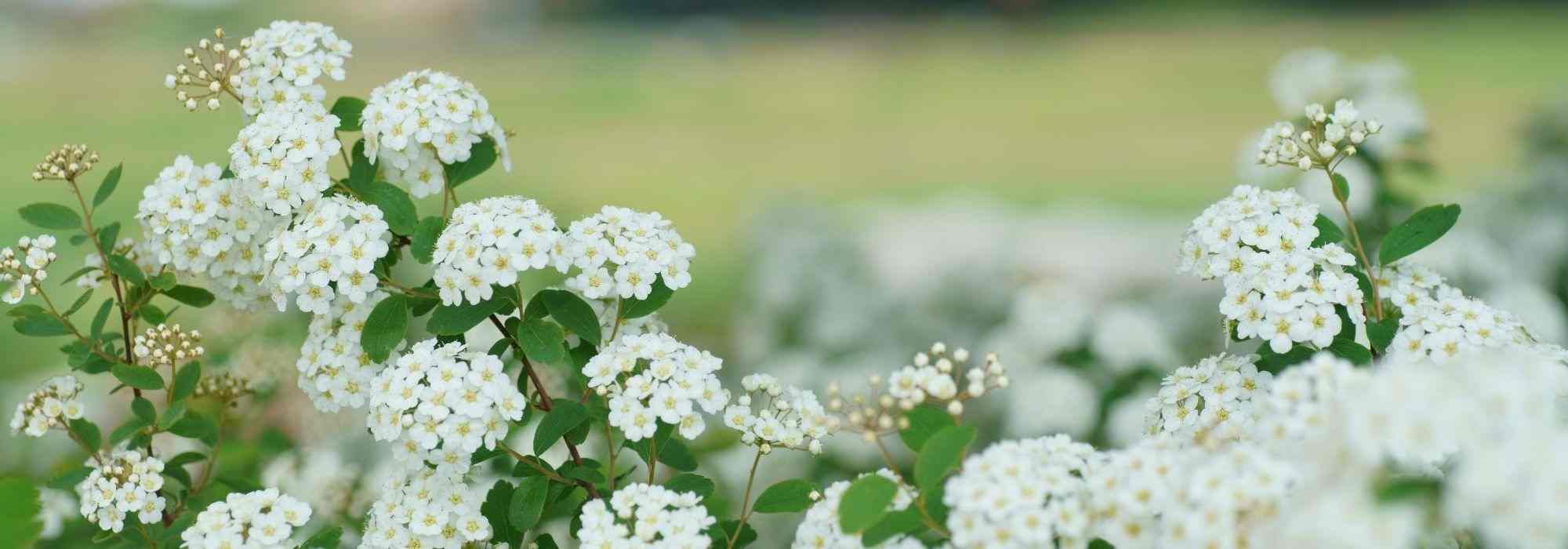
How to choose a spiraea?
Our tips for finding the ideal variety
Contents
The spiraea is the ideal bush for any gardener, even a beginner: easy to grow, hardy, not very susceptible to diseases, and low-maintenance, it will fit perfectly in both large spaces and small gardens or pots, enhancing terraces and balconies.
Spiraeas offer a generous spring or summer flowering, white or pink, depending on the varieties. Their generally bushy or arching silhouette is also highly valued for fitting into both natural-style gardens and more classic or graphically inspired designs.
Flower colours and shapes, flowering periods, foliage characteristics, silhouettes, and garden uses… Let’s see how to choose a spiraea based on these different criteria to find the perfect variety!
Choosing a spiraea based on flower colour
Spiraeas bloom adorned with adorable small clustered flowers. Their shades range from pure white to bright pink, depending on the varieties.
White Spiraeas
Spring spiraeas offer a very elegant and bright white flowering. They are generally adorned with five-petalled hawthorn-like flowers, highlighted by a centre of long stamen in yellow-green hues.
Among them, we can mention the white spiraea Spiraea arguta, the dentate spiraea Spiraea cinerea ‘Graciosa’, the Thunberg spiraea Spiraea thunbergii ‘Fujino Pink’, and the Japanese spiraea Spiraea nipponica ‘Snowmound’.
Pink Spiraeas
Summer spiraeas, on the other hand, produce flowers in various shades of pink, from the softest to the most vibrant.
- The Japanese spiraea ‘Crispa’ features flowers in a strong pink with almost red hues.
- ‘Golden Princess’ offers more unique shades, from an antique pink to salmon notes.
- The flowers of ‘Sparkling Champagne’ display a pale pink enhanced by a centre of red stamen.
- ‘Zen’Spirit Caramel’ produces flowers in a purple-pink hue.
- ‘Little Princess’ prefers a very soft pink.
- The Japanese spiraea ‘Double Play Artist’ leans towards a pure pink.
- ‘Double Play Red’ offers a pink that strongly leans towards crimson red.
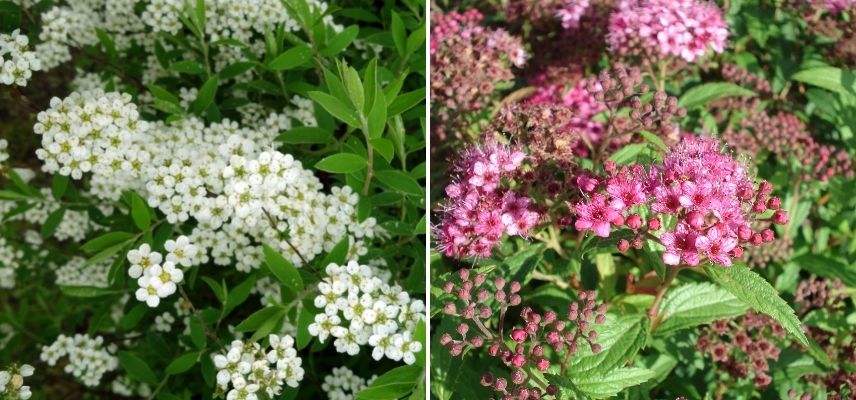
Spiraea ‘Snowmound’ and ‘Golden Princess’
Spiraeas with More Surprising Colours
However, with spiraeas, the colour palette is not simply binary. Some varieties blend several shades or evolve throughout the season.
This is the case with ‘Goldflame’, which combines different shades, transitioning from a gradient of carmine pink to a bronze-copper in autumn.
We also mention the tricolour ‘Shirobana’, which beautifully mixes shades of pink, white, and red throughout its flowering period.
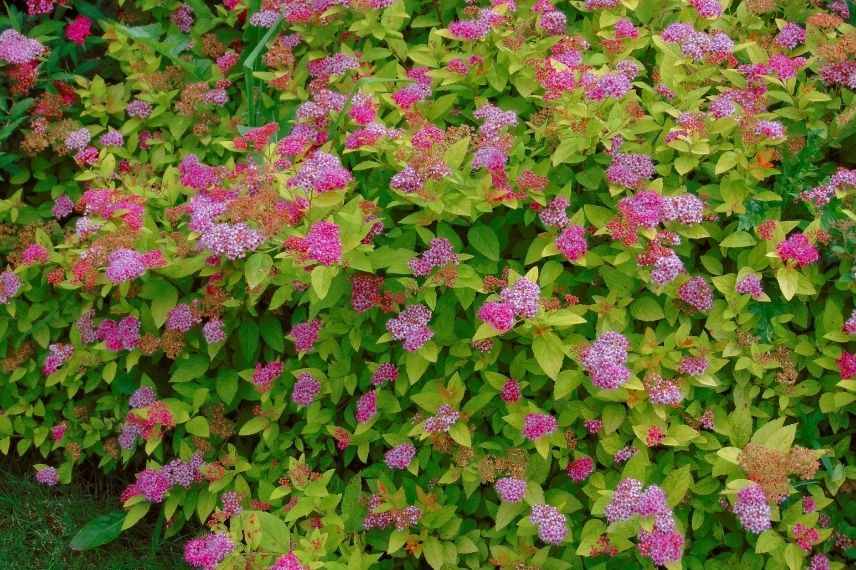
Spiraea ‘Goldflame’
Choosing a spiraea based on flower shape
Spiraeas display several types of flowering. The flowers can be grouped in umbels (corymbs) at the tips of the branches; they can be gathered in long spike-like inflorescences; finally, some are clustered along the branches.
Some spiraeas form true luminous balls, while others offer magnificent floral cascades. The choice is yours!
Among our favourite spiraeas with corymb flowers, we have:
- Spiraea bumalda ‘Superstar’, with its inflorescences of about 7 cm in a sparkling pink
- the birch-leaved spiraea ‘Pink Sparkler’, with slightly rounded umbels in a lovely pale pink
- the Japanese spiraea ‘Albiflora’, which boasts globular white inflorescences reminiscent of hydrangeas
- ‘Anthony Waterer’, with its flat umbels full of vitality
Among the spiraeas with spike-like flowering, we mention Spiraea billardii with its splendid fluffy spikes of 11 cm, displaying a bright pink.
The spring spiraea Spiraea cinerea ‘Grefsheim’ features white flowers completely covering its flexible branches, which bend under their weight and cascade down. This is also true for the luminous plum-leaved spiraea, whose flexible flowers entirely cover the bush, giving an almost snowy or mossy effect. Its flowers are also notable for being double.
Good to know: all spiraea flowers, regardless of their shape, are highly melliferous and particularly appreciated by pollinating insects (bees, butterflies, bumblebees, etc.).

Spiraea ‘Anthony Waterer’, Spiraea billardii (photo Wikipedia) and Spiraea ‘Grefsheim’ (photo Wikipedia)
Discover other Spiraea
View all →Available in 2 sizes
Available in 1 sizes
Available in 3 sizes
Available in 0 sizes
Available in 3 sizes
Available in 1 sizes
Available in 1 sizes
Available in 5 sizes
Available in 1 sizes
Available in 1 sizes
Choose a spiraea according to the flowering period
We have seen that we can distinguish two types of spireas:
- spring spireas, which generally flower from March to May-June
- summer spireas, which flower from June to August-September
The abundant flowering lasts on average for 3 weeks continuously.
Among the early-flowering spireas, we have Thunberg’s spirea, one of the first to bloom, usually from March, just like the cultivar ‘Fujino Pink’. The Prunus-leaved spirea also starts early in the season in mild climates.
Summer spireas have the advantage of being perpetual and can flower again at the end of the season, in September or October, such as the Japanese spireas ‘Nana’, ‘Magic Carpet’, ‘Double Play Gold’, or the birch-leaved spirea ‘Pink Sparkler’.
For long flowering periods, we can mention Spiraea bumalda ‘Superstar’, which flowers from June to September, or the Japanese spirea ‘Shirobana’, which blooms from July until the end of September or early October in mild climates.
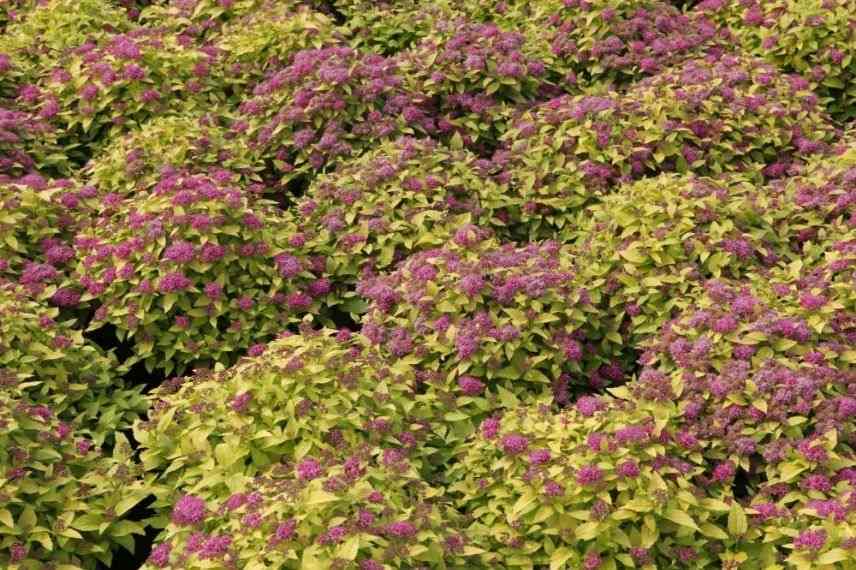
Spiraea japonica ‘Double Play Gold’ (photo Denolf)
Decorative foliage varieties
Spiraeas are also appreciated for the beauty of their foliage. Beyond the more classic green leaves, there are varieties with golden foliage, such as ‘Double Play Gold’ with bright leaves tinged with yellow.
Less common, the late-blooming ‘White Carpet’ produces dark green, glossy foliage with blue hues on the underside of the leaves.
Some varieties offer a truly spectacular display in the garden during autumn, with their foliage changing over time.
Among the most appreciated, we find:
- the Japanese spiraea ‘Goldflame’, with foliage that evolves through the seasons, first copper-orange, then golden yellow, green, and finally bronze
- ‘Goldmound’, whose golden leaves in spring turn light green before becoming bronze-copper
- ‘Magic Carpet’, which adorns itself with young bronze and orange-pink shoots, before the leaves take on green-yellow hues
- ‘Zen’Spirit Caramel’, transitioning from caramel-orange to summer green foliage, before finishing with fire-like red-copper hues
- the golden Van Houtte spiraea, whose golden foliage turns green in summer, then yellow-orange in autumn
- the ‘Tor Gold’ birch-leaved spiraea, with foliage changing from yellow to orange, then red, before finishing with rare purple hues
- ‘Double Play Blue Kazoo’, which offers stunning bluish hues before adorning itself with red-orange
While spiraeas are usually deciduous, Spiraea thunbergii ‘Fujino Pink’ has the particularity of having semi-evergreen foliage in mild climates.
Finally, on the side of uncommon foliage, the Japanese spiraea ‘Crispa’ gets its name from its particularly dentate, oblong leaves, described as “crisped.”
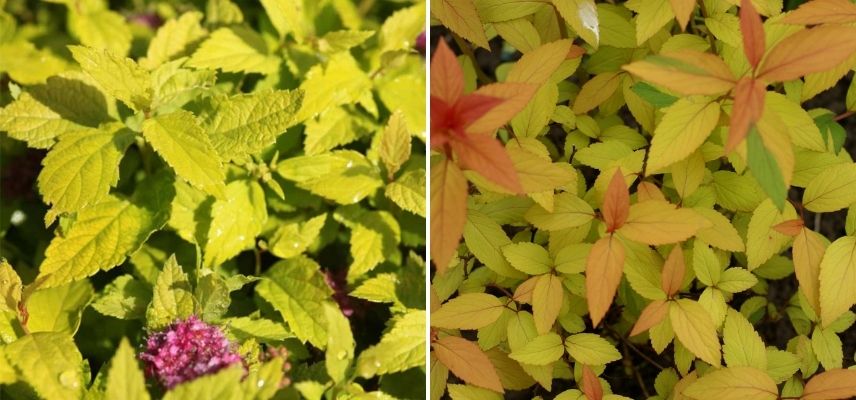
Spiraea ‘Double Play Gold’ and ‘Magic Carpet’ (photo Yaffa Phillips)
Choosing a spiraea based on its size or use
In the garden, spireas are easy to integrate. Spring varieties of spireas are generally larger than summer spireas.
Larger Varieties
The larger models, reaching up to 2.5 metres, will enliven free hedges and borders, but will also be perfect as stand-alone specimens on a short grass meadow. Their habit can be upright or their branches can be arching, giving the bushes a graceful, drooping silhouette during flowering.
Among them, we have Spiraea billardii, Van Houtte’s spirea (2 metres in all directions), or the Japanese spirea ‘Snowmound’ (2 metres high with a spread of 2.5 metres).
Smaller Varieties
Smaller, even dwarf varieties, which will not exceed 80 cm to 1 metre, are ideal for borders, rockeries, or low hedges. They will also lend themselves very well to pot cultivation. Their habit is compact, bushy, and dense.
Among them, opt for the adorable Japanese spirea ‘Little Princess’, a dwarf variety that does not exceed 30 to 40 cm in height with a spread of 70 cm.
The Japanese spirea ‘Magic Carpet’ (50 cm in all directions), ‘Double Play Artist’ (60 cm in all directions), ‘Double Play Big Bang Tracy’ (75 cm in all directions), or the birch-leaved spirea ‘Tor’ (80 cm in all directions) also have small silhouettes perfect for restricted spaces.
As for the wider-than-tall silhouettes of the Japanese spirea ‘Albiflora’ (90 cm high by 60 cm wide) or ‘Firelight’ (1 metre high by 75 cm wide), they can beautifully dress a slope or even serve as ground cover.
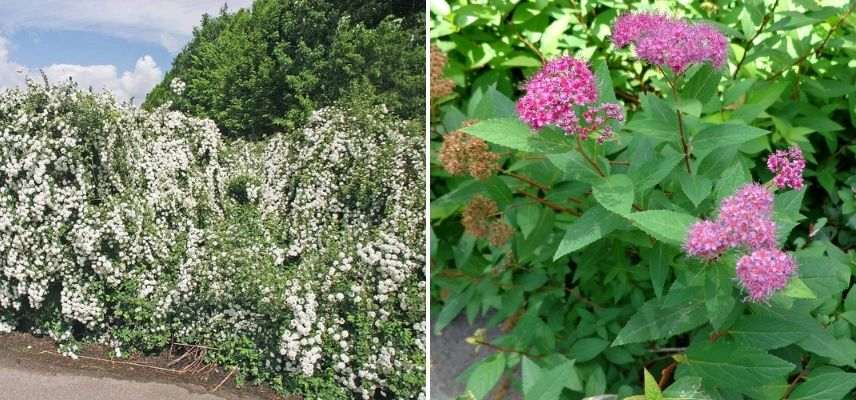
Spiraea vanhouttei (photo Wikipedia) and ‘Double Play Artist’
- Subscribe!
- Contents
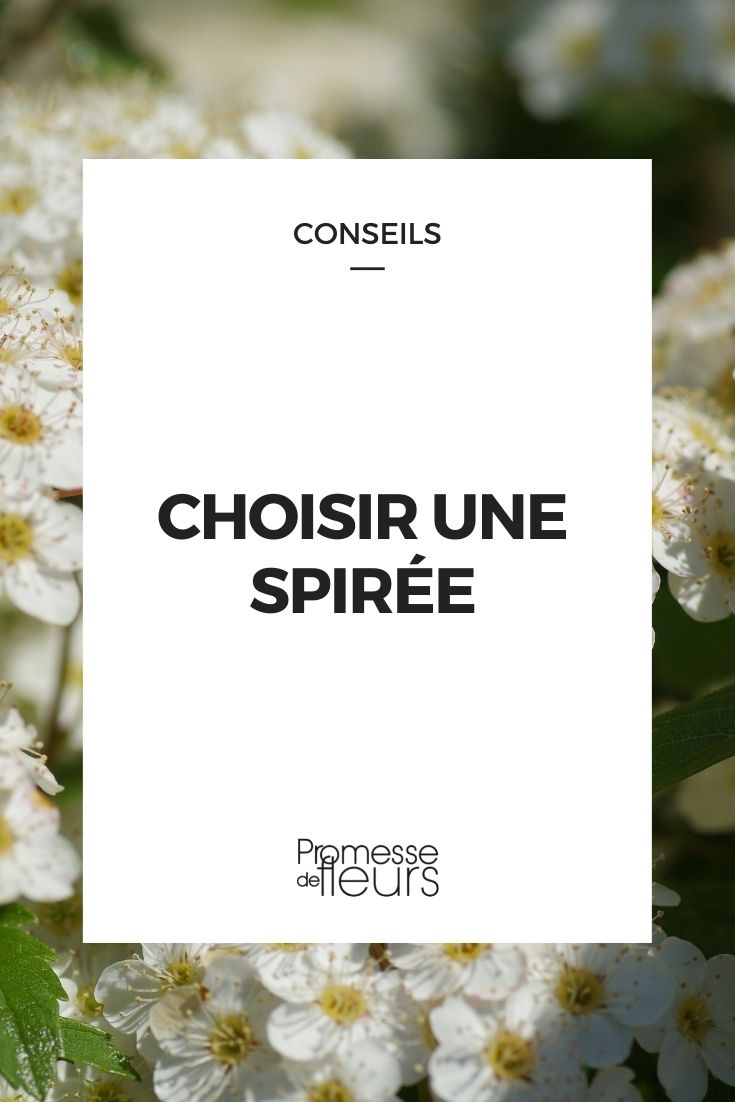































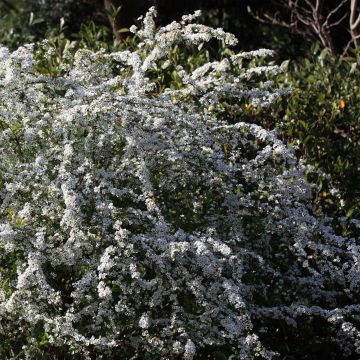
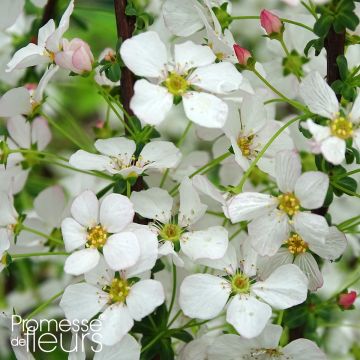
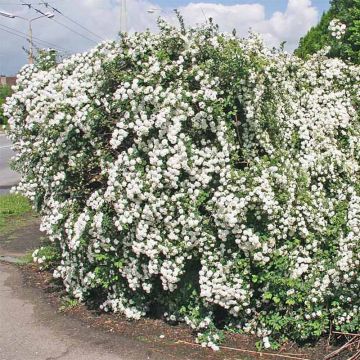
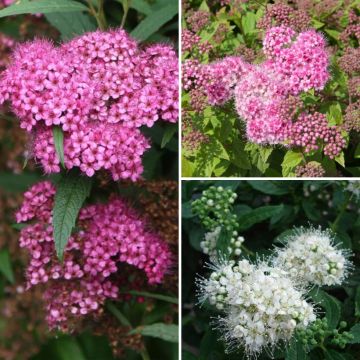
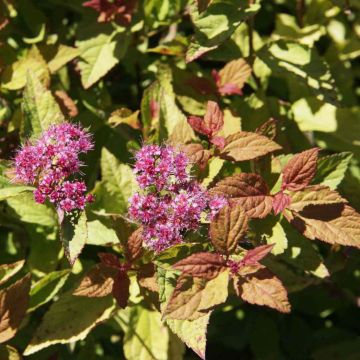
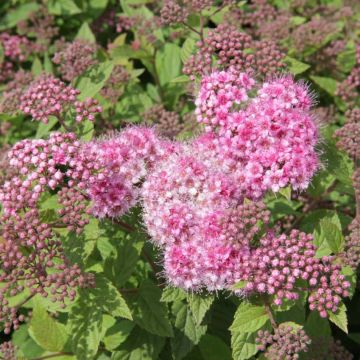
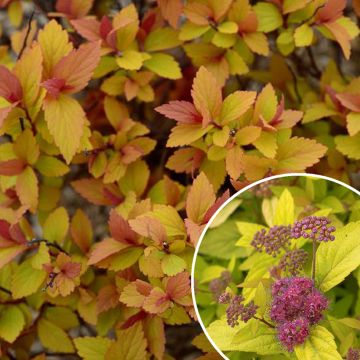
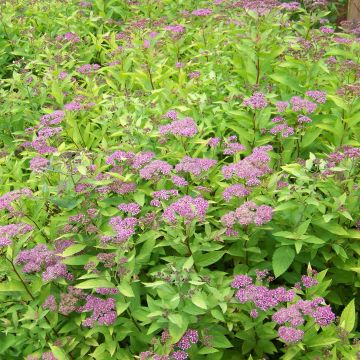
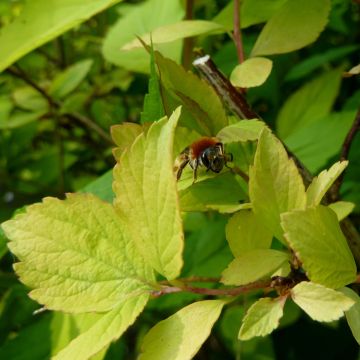
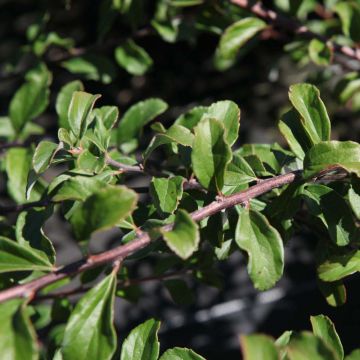
Comments